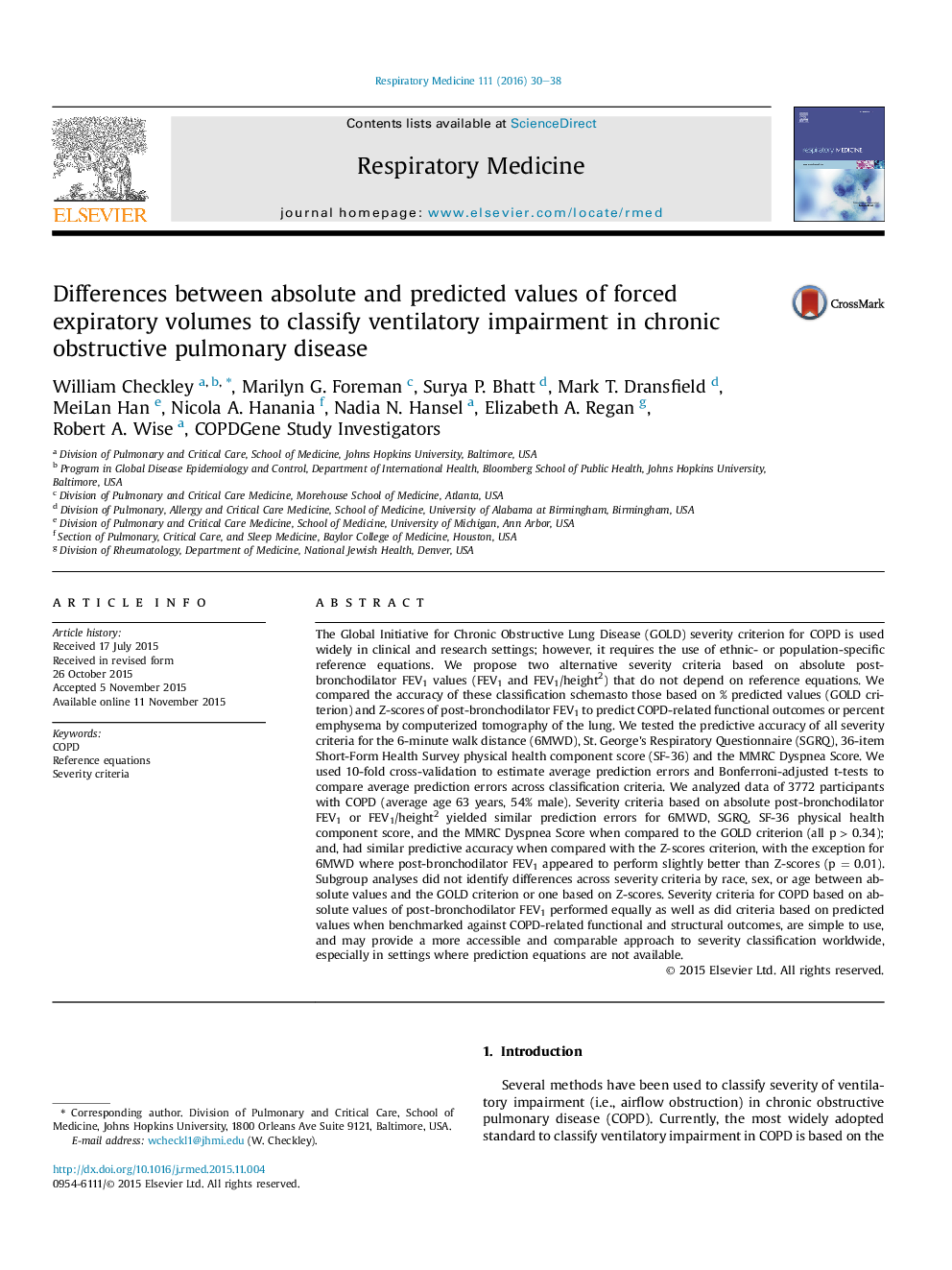| کد مقاله | کد نشریه | سال انتشار | مقاله انگلیسی | نسخه تمام متن |
|---|---|---|---|---|
| 6241340 | 1609455 | 2016 | 9 صفحه PDF | دانلود رایگان |
عنوان انگلیسی مقاله ISI
Differences between absolute and predicted values of forced expiratory volumes to classify ventilatory impairment in chronic obstructive pulmonary disease
ترجمه فارسی عنوان
تفاوت بین مقادیر مطلق و پیش بینی شده حجم مجاز برای دسته بندی اختلالات تهویه در بیماری مزمن انسدادی ریه
دانلود مقاله + سفارش ترجمه
دانلود مقاله ISI انگلیسی
رایگان برای ایرانیان
کلمات کلیدی
موضوعات مرتبط
علوم پزشکی و سلامت
پزشکی و دندانپزشکی
پزشکی ریوی و تنفسی
چکیده انگلیسی
The Global Initiative for Chronic Obstructive Lung Disease (GOLD) severity criterion for COPD is used widely in clinical and research settings; however, it requires the use of ethnic- or population-specific reference equations. We propose two alternative severity criteria based on absolute post-bronchodilator FEV1 values (FEV1 and FEV1/height2) that do not depend on reference equations. We compared the accuracy of these classification schemasto those based on % predicted values (GOLD criterion) and Z-scores of post-bronchodilator FEV1 to predict COPD-related functional outcomes or percent emphysema by computerized tomography of the lung. We tested the predictive accuracy of all severity criteria for the 6-minute walk distance (6MWD), St. George's Respiratory Questionnaire (SGRQ), 36-item Short-Form Health Survey physical health component score (SF-36) and the MMRC Dyspnea Score. We used 10-fold cross-validation to estimate average prediction errors and Bonferroni-adjusted t-tests to compare average prediction errors across classification criteria. We analyzed data of 3772 participants with COPD (average age 63 years, 54% male). Severity criteria based on absolute post-bronchodilator FEV1 or FEV1/height2 yielded similar prediction errors for 6MWD, SGRQ, SF-36 physical health component score, and the MMRC Dyspnea Score when compared to the GOLD criterion (all p > 0.34); and, had similar predictive accuracy when compared with the Z-scores criterion, with the exception for 6MWD where post-bronchodilator FEV1 appeared to perform slightly better than Z-scores (p = 0.01). Subgroup analyses did not identify differences across severity criteria by race, sex, or age between absolute values and the GOLD criterion or one based on Z-scores. Severity criteria for COPD based on absolute values of post-bronchodilator FEV1 performed equally as well as did criteria based on predicted values when benchmarked against COPD-related functional and structural outcomes, are simple to use, and may provide a more accessible and comparable approach to severity classification worldwide, especially in settings where prediction equations are not available.
ناشر
Database: Elsevier - ScienceDirect (ساینس دایرکت)
Journal: Respiratory Medicine - Volume 111, February 2016, Pages 30-38
Journal: Respiratory Medicine - Volume 111, February 2016, Pages 30-38
نویسندگان
William Checkley, Marilyn G. Foreman, Surya P. Bhatt, Mark T. Dransfield, MeiLan Han, Nicola A. Hanania, Nadia N. Hansel, Elizabeth A. Regan, Robert A. Wise, COPDGene Study Investigators COPDGene Study Investigators,
